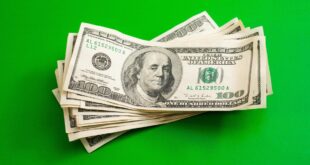
FREDERICA ABAN/Getty Images
Key Takeaways
- You can earn up to 5.30% APY with today’s best high-yield savings accounts.
- Savings rates are dropping after last week’s Fed rate cut.
- The sooner you open a high-yield savings account, the higher your earning potential.
After nearly a year of speculation, the Federal Reserve cut interest rates by half a percentage point last week. In response, we’ve seen savings rates dip slightly, but they won’t plummet overnight.
The best high-yield savings accounts still earn annual percentage yields, or APYs, as high as 5.30% — more than 10 times the national average. So, there’s still time to earn a great rate if you want to grow your emergency fund or start a sinking fund.
Read on to see CNET’s picks for the best high-yield savings account rates.
Today’s best savings rates
Here are some of the top savings account APYs available right now:
Experts recommend comparing rates before opening a savings account to get the best APY possible. You can enter your information below to see CNET’s partners’ rates in your area.
What you need to know after last week’s rate cut
The Fed meets eight times a year to assess the US economy and interest rate changes. It may adjust the federal funds rate to help boost growth or slow down inflation. Since 2022, savers have enjoyed high rates as the Fed regularly hiked the federal funds rate to fight record inflation. But after more than a year of holding rates steady, the Fed cut rates by 0.5% at Wednesday’s Federal Open Market Committee meeting.
A single interest rate cut won’t immediately affect your wallet. But when the Fed adjusts the federal funds rate, banks typically respond by knocking down rates they offer to savers.
“The Fed controls short-term interest rates, which directly influence the rates offered by banks on savings accounts,” said Justin Haywood, certified financial planner and President and co-founder of Haywood Wealth Management. “As the Fed reduces rates to stimulate the economy, banks typically follow suit by lowering the interest rates they offer on deposit accounts, including savings accounts.”
Now that the Fed responded to the latest labor and inflation reports with a rate cut, we expect savings rates to drop, albeit gradually. Banks have already started lowering APYs. For example, My Banking Direct — one of the top accounts we track — dropped its APY from 5.45% at the beginning of August to 5.00% on Sept. 20.
Here’s where savings rates stood at the start of this week compared to the start of last week:
| Last week’s CNET average savings APY | This week’s CNET average savings APY | Weekly change | |
| 4.80% | 4.75% | -1.04% |
*Weekly percentage increase/decrease from Sept. 16, 2024, to Sept. 23, 2024.
Weigh these factors when choosing a savings account
Stashing your extra funds in an account with a high APY is important, but don’t stop there. There are many variables you should consider before committing to a savings account, including the following:
- Minimum deposit requirements: Some HYSAs require a minimum amount to open an account — typically, from $25 to $100. Others don’t require anything.
- ATM access: Not every bank offers cash deposits and withdrawals. If you need regular ATM access, check to see if your bank offers ATM fee reimbursements or a wide range of in-network ATMs, said Lanesha Mohip, founder of the Polished CFO and CNET expert review board member.
- Fees: Look out for fees for monthly maintenance, withdrawals and paper statements, said Mohip. The charges can eat into your balance.
- Accessibility: If you prefer in-person assistance, look for a bank with physical branches. If you’re comfortable managing your money digitally, consider an online bank.
- Withdrawal limits: Some banks charge an excess withdrawal fee if you make more than six monthly withdrawals. If you think you may need to make more, consider a bank without this limit.
- Federal deposit insurance: Make sure your bank or credit union is either insured with the FDIC or the NCUA. This way, your money is protected up to $250,000 per account holder, per category, if there’s a bank failure.
- Customer service: Choose a bank that’s responsive and makes it easy to get help with your account if you need it. Read online customer reviews and contact the bank’s customer service to get a feel for working with the bank.
Methodology
CNET reviewed savings accounts at more than 50 traditional and online banks, credit unions and financial institutions with nationwide services. Each account received a score between one (lowest) and five (highest). The savings accounts listed here are all insured up to $250,000 per person, per account category, per institution, by the FDIC or NCUA.
CNET evaluates the best savings accounts using a set of established criteria that compares annual percentage yields, monthly fees, minimum deposits or balances and access to physical branches. None of the banks on our list charge monthly maintenance fees. An account will rank higher for offering any of the following perks:
- Account bonuses
- Automated savings features
- Wealth management consulting/coaching services
- Cash deposits
- Extensive ATM networks and/or ATM rebates for out-of-network ATM use
A savings account may be rated lower if it doesn’t have an easy-to-navigate website or if it doesn’t offer helpful features like an ATM card. Accounts that impose restrictive residency requirements or fees for exceeding monthly transaction limits may also be rated lower.
Recommended Articles
Source link
 meganwoolsey Home
meganwoolsey Home



